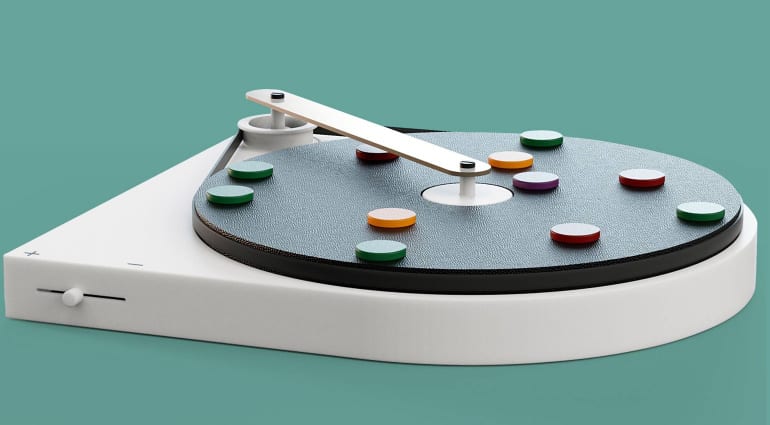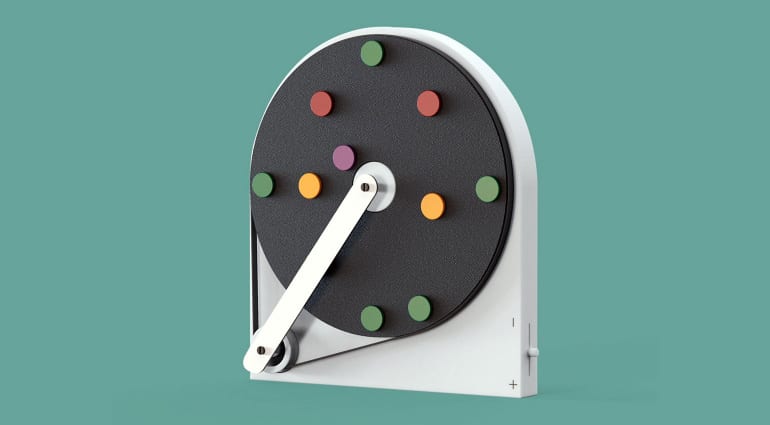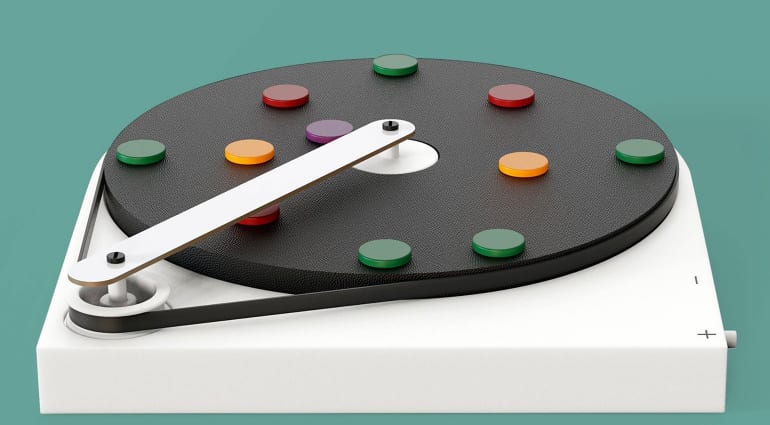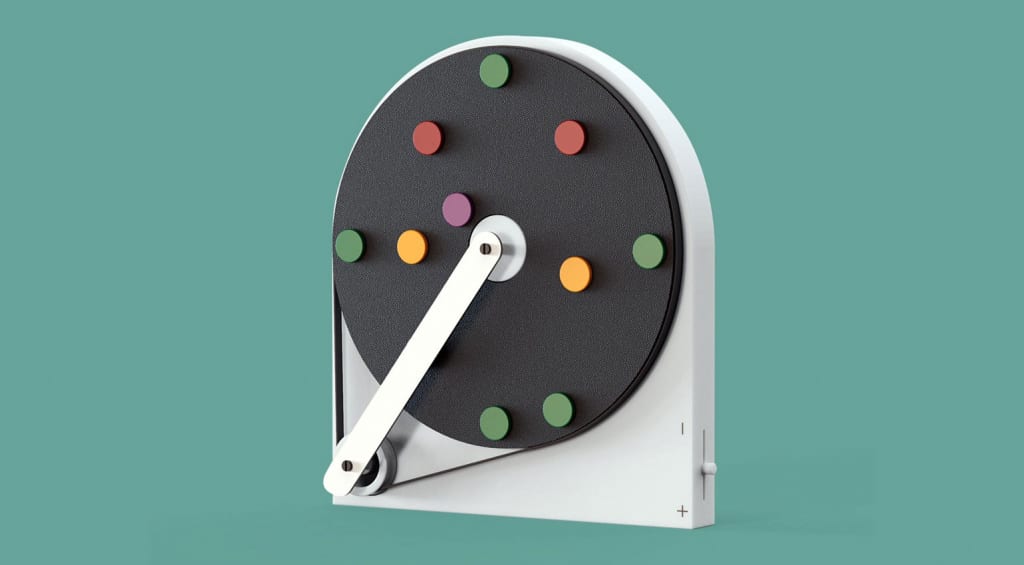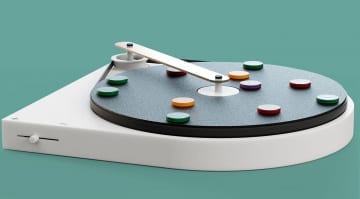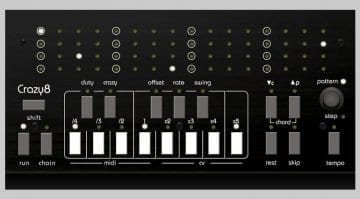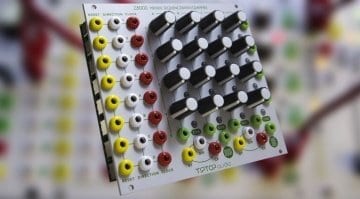Orbita: A crazy, playful, spinning multi-sensory turntable sequencer
Playtronica has come up with a turntable sequencer that converts the placement of colourful magnets into electronic music.
Orbita
Playtronica are all about the physical interaction. They enjoy nothing more than connecting humans to electronics in order to invoke musical happenings. Whether it’s the TouchMe two-person tactile synth or the Playtron bewilderment tool that turns vegetables into musical triggers, the fun is in the connection. With Orbita the interaction is in the placement of dots upon a turntable of events that are then translated into music.
Orbita is essentially a simple sequencer. You attach magnetic dots onto the disc that represent notes or events. As the disc spins the arm, fixed with colour sensors, registers the dots as they pass and triggers whatever it is you’ve got it connected to. There are 12 colours to represent 12 notes which are passed to an app that sees them as MIDI notes. The distance from the centre can be used to represent different tracks or MIDI messages.
Modes of Play
Currently they have 3 different modes of play. In the first mode you have 4 MIDI channels to play 4 instruments with the distance governing which instrument your coloured dot is playing. The next mode focuses on a single instrument but with 4 octaves of play. The third mode will take a sheet of paper you’ve drawn on and interpret that via the sensors into music.
They’ve also developed a little CV board for it so you can have 4 channels of CV/Gate coming out making it very modular friendly.
It’s a fun and colourful way to present a sequencer and could make for some very wayward and unexpected melodies and rhythms that get revealed through experimentation. You have control over the speed, the placement and movement of the magnets and you can also scratch it, stop it, reverse it and general mess it about as a physical object which has a direct affect on the music being produced. The colours you use translates directly to the notes being produced and so you can make music through your choice of colour which is really nice.
More than Fun!
It was “fun” that I initially saw when I first came across Orbita but after writing about it I realise that there’s the potential for a lot more depth here. I can imagine it being an interactive part of synth installation, or a way of getting physically involved in clocking a modular synth, or simply enjoying the small changes in poking the magnets about as the music unfolds.
Playtronica hope to launch this on Kickstarter very soon and are suggesting that you sign up to be in for a chance of early-bird deals. I’m looking forward to seeing it in action.
They did a presentation at the NAMM 2021 show that I managed to pull out of the ether on an unlisted YouTube video (below). It gives some good information but sadly the prototype wasn’t working.
More information
Video
You are currently viewing a placeholder content from YouTube. To access the actual content, click the button below. Please note that doing so will share data with third-party providers.
